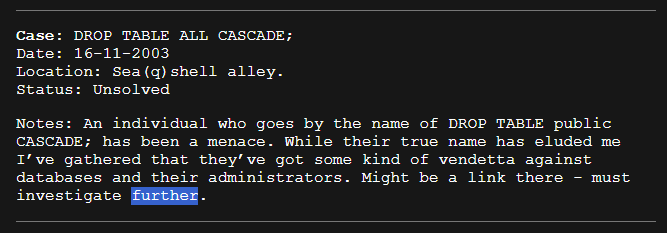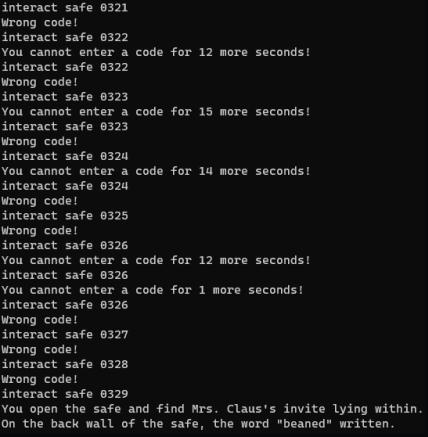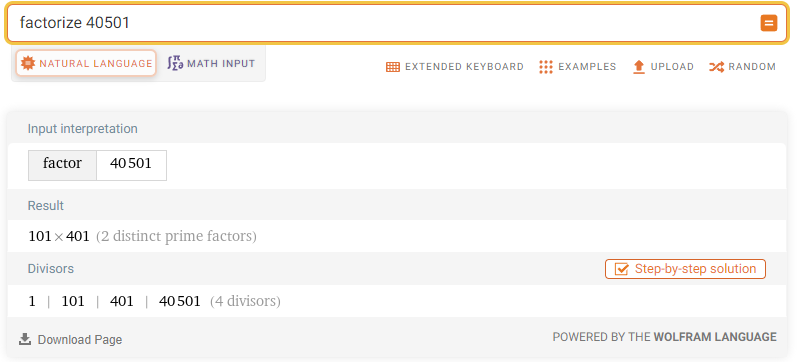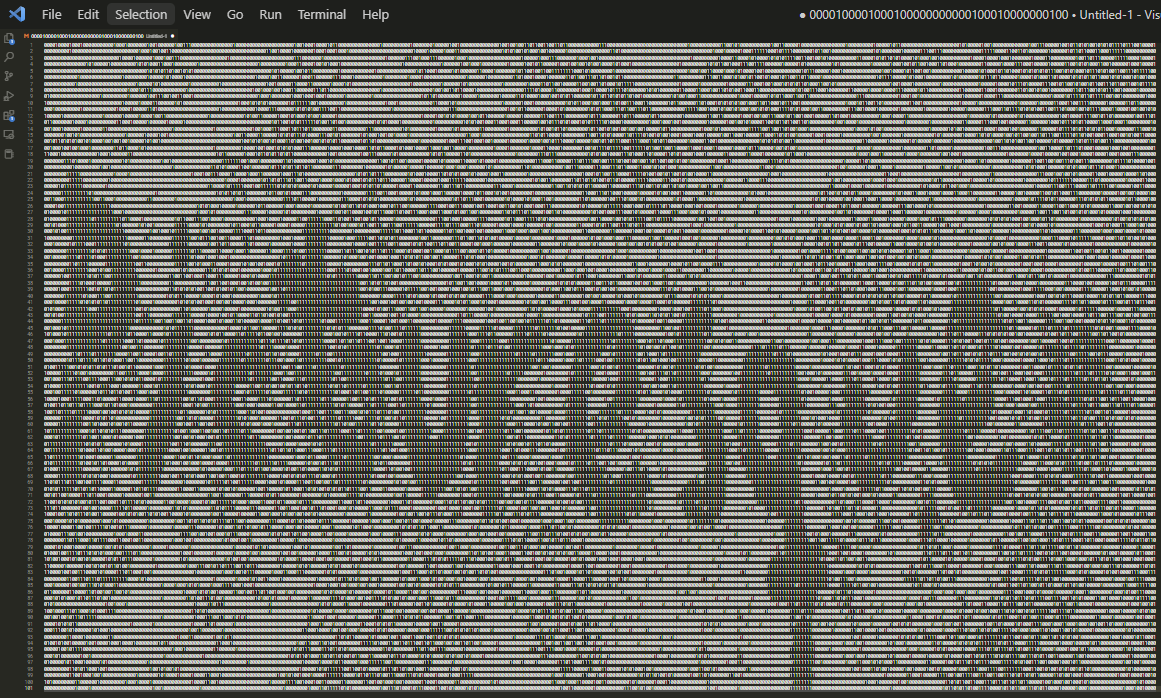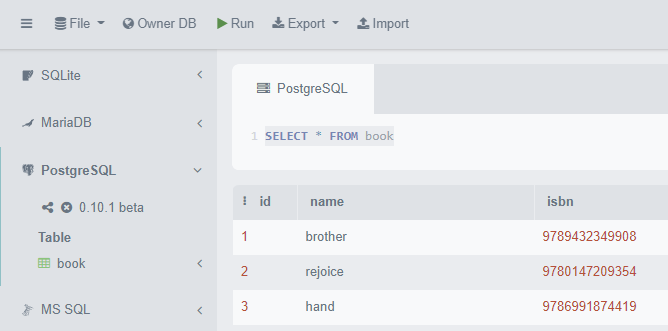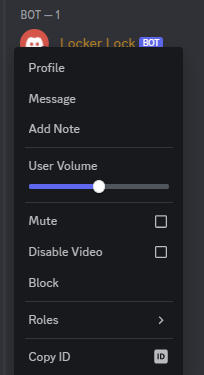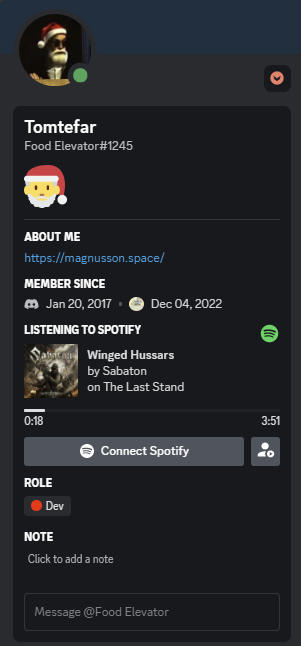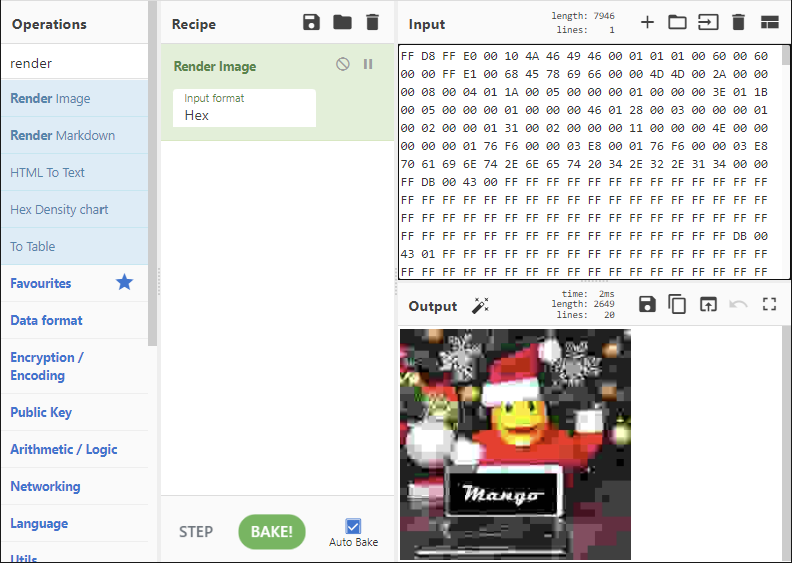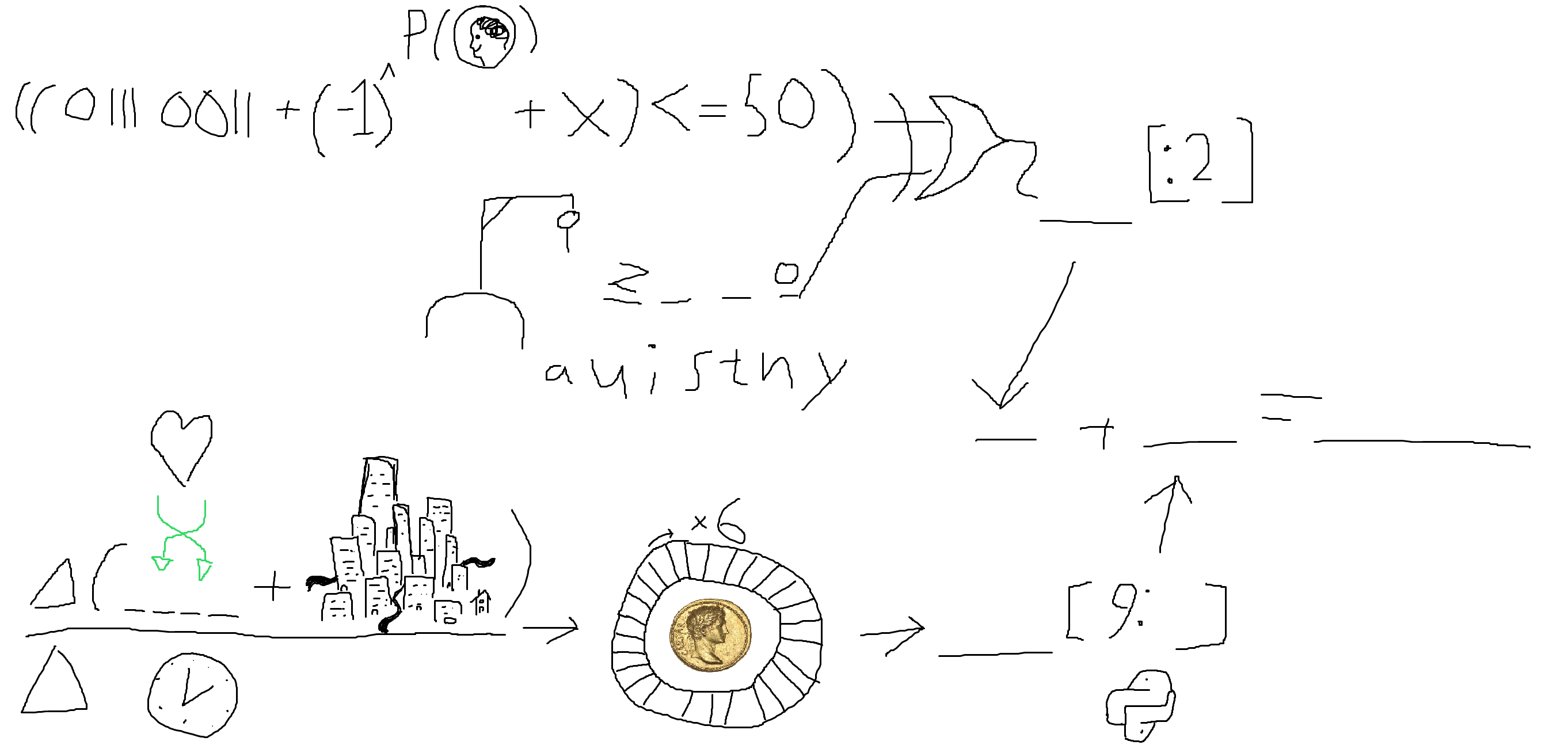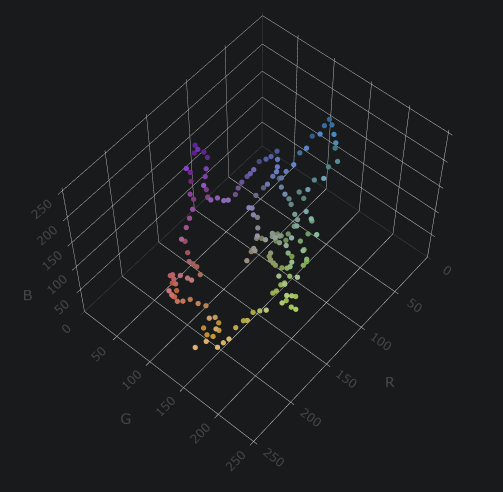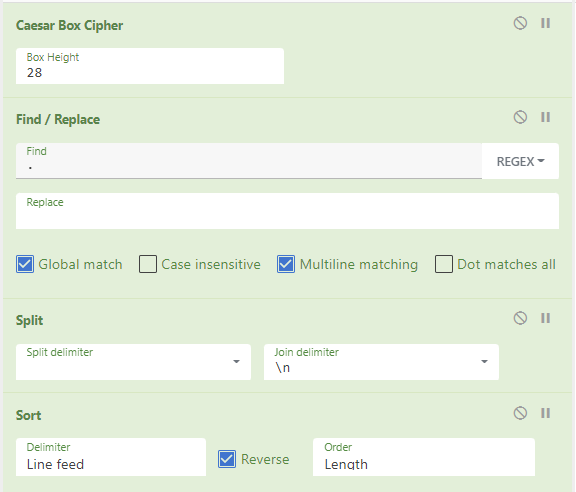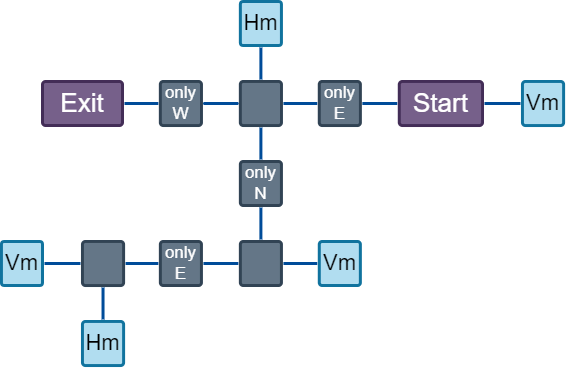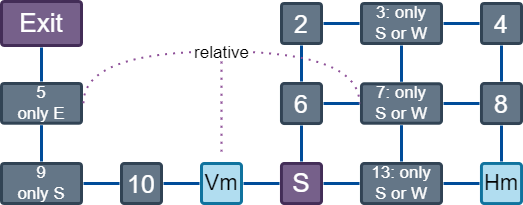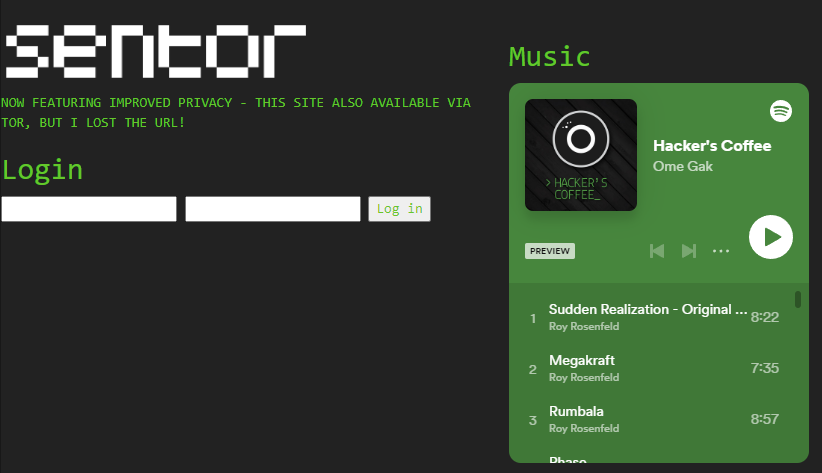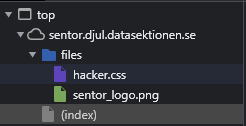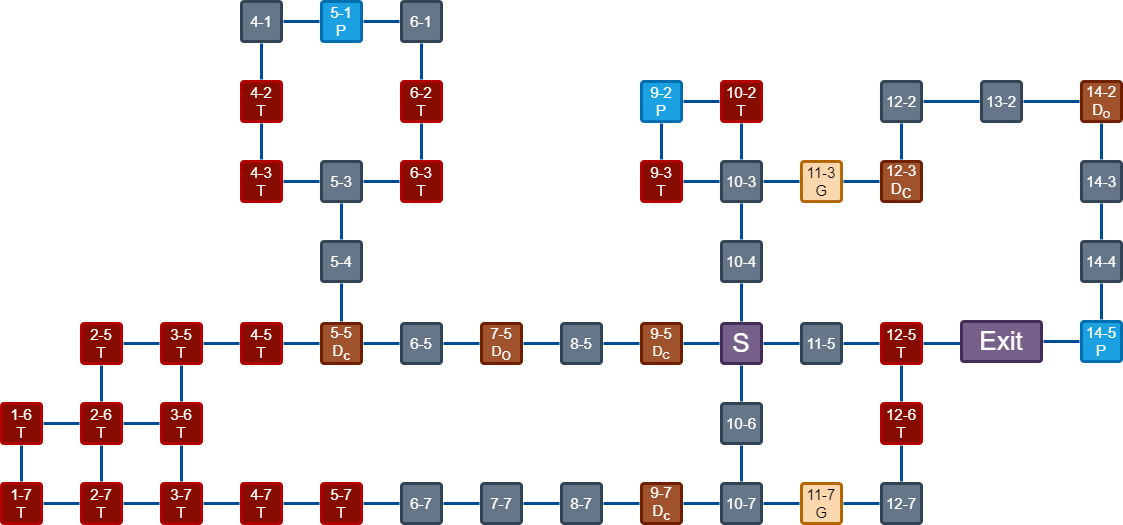dJulkalendern 2022 Write-up
Introduction
A Swedish friend and student at KTH university introduced me to a CTF-like puzzle in an advent calendar format called dJulkalendern. A window (i.e. puzzle) will be released every weekday at 12:15 PM (Europe/Stockholm, UTC+01:00)
The event is arranged by (I presume students and/or faculty at) KTH University
Luckily, you don’t really have to understand Swedish, as the website and puzzles are written in English. The flags are also single English words, without any pre- or postfix.
There also is a Discord server available. Other than some general text and announcement channels, the organizers provided a neat way to grant access to a separate channel, corresponding to each puzzle, if you’ve successfully solved that challenge. Access is granted through a Discord bot that asks you the “single-english-word-flag” through a DM.
The content in each Discord channel does force you to use e.g. Google translate to translate some Swedish to your native language if you’re interested in what people are saying.
As I work full-time, additionally participating in Advent of Code 2022, and these release at the start of the afternoon, I don’t do these exactly when the puzzle releases. Therefore, I won’t be ranked high on the scoreboard.
Day -1: Ready?
This window, Window -1, is a practice window of sorts. It does not count toward the final score. The solution is the last word in the notes of the 2003 case, which you can read on the Lore Page.
Navigating to https://djul.datasektionen.se/lore reveals the flag to be further.
Day 1: Mrs. Claus, more like Missing Claus
We are given a password prompt, along with a hint.
1
The root of all 3vil is: 1404928 1481544 1367631 1191016 1030301 970299 1560896 1157625 1367631 1331000
The hint is the number 3 in the “l33t speak” version of evil. It shows that a cube root must be performed on these numbers. The fastest way to do this was to open up a web browser’s debugger console and write some JavaScript. The resulting numbers are ASCII numbers. JavaScript’s String.fromCharCode clears that up. The .join("") was added for this write up to make it more neat.
1
2
3
"1404928 1481544 1367631 1191016 1030301 970299 1560896 1157625 1367631 1331000"
.split(' ')
.map((x) => String.fromCharCode(Math.cbrt(x))).join("")
This gives us the flag projection
Day 2: Writing Safe Code
This day’s puzzle instructs you how to use netcat to connect to a text-based adventure. This is also known as a Multi User Dungeon or “MUD”.
You traverse the rooms with e.g. go north, and find out what there is to interact with in a room by using the whatishere command. As you navigate, you collect small clues by e.g. using a stick to shove some things out of reach. The small clues are digits, arranged with underscores in order (e.g. 0 _ _ _, _ 3 _ _, _ _ 2 _)
Later, you encounter a safe asking for a pin number.
The last digit was hidden in plain sight, and I didn’t get the hint towards it. However, if you have 3 out of 4 digits, you can iterate the safe with a brute-force. The delay of ~20 seconds luckily wasn’t increasing on a failed attempt. I luckily wasn’t going for time either :)
I thought to myself “I’ll start at 1, worst case it’s a 0 and it’ll take ~200 seconds if I copy the command to my clipboard while waiting”. Of course, the correct digit was the number 9…
After opening the safe, the flag was revealed to be beaned.
A fun element was that you were allowed to set a username and see who else of the participants was in the room with you through the whoishere command. You were also able to say something in a room to communicate with them. Although I didn’t encounter someone else using that feature. Probably all too busy finding the safe pin.
Later in the Discord channel you hear the hint you missed. Something with 9 chili peppers on a tree, where another place in the game refers to the last digit to be the number of fruits on the hottest plant.
Day 5: Two Factor Authentication
This day’s puzzle gives you a text file, containing a single string of 40501 binary digits.
40501 is not divisible by 8 without leaving remainder values. It therefore cannot indicate something in the typical byte length of 8. This is where CyberChef should come in for the rescue. Can it find something that’s not gibberish for other byte lengths? Alas, no clear result. Time to take a step back.
The long character length gravitated me towards a bitmap grayscale image being the solution here. For the possible color values of 0 - 255, 0 maps to white, and 1 maps to black (or vice-versa).
To see if this was feasible, we’d need the dimensions of a potential image. We check the factors of the length 40501 through Wolfram Alpha.
Exactly two numbers that peak our interest: 101 and 401! We’re on a good track, it doesn’t seem that this is just a coincidence.
Before going through the effort of generating an image, maybe it’s readable in text form? We assume the text is written horizontally (401 x 101). This means that inserting a carriage return after every 401 characters should maybe show something. Hitting Ctrl + - a bunch in Visual Studio Code to zoom out, we get the following output.
You can, of course, also write a small program that makes something similar into an actual image, or use online tools like decode.fr/binary-image
Day 6: Obstacles
For this puzzle, we are given a video where a duck navigates some obstacles.
The clue is in this puzzle’s title “Obstacles”. If we record the height each set of 3 obstacles have, we get the following numbers.
1
011 120 010 210 111 012 112 202 001 200 221
We employ the browser’s built-in JavaScript console again for this puzzle. The parseInt() function parses a string argument and returns an integer of the specified radix (the base in mathematical numeral systems). In this case, base 3 makes the most sense of course.
1
[4, 15, 3, 21, 13, 5, 14, 20, 1, 18, 25]
We get a set of numbers that seem to be alphabet coded (1 = a, 2 = b, 3 = c etc.). Although String.fromCharCode() (and similar functions in most languages) don’t have ASCII tables where the A character starts at 1, you can of course add the number from where it does: 64 for uppercase or 96 for lowercase.
The final function becomes
1
2
3
"011 120 010 210 111 012 112 202 001 200 221"
.split(' ')
.map((x) => String.fromCharCode(parseInt(x, 3) + 96)).join("")
Which returns the flag documentary.
Day 7: Database
This puzzle includes a file called wishlist.sql (download) along with the hint
check digit 13
This .sql file first contains instructions to create a table called “Books”. Each book has an incrementing id, name, and isbn number.
1
2
3
4
5
CREATE TABLE Book (
id SERIAL PRIMARY KEY,
name TEXT NOT NULL,
isbn BIGINT NOT NULL
);
Afterwards, there are 250 INSERT INTO commands that fills this table with books.
After researching how ISBN-13 numbers work, I quickly figured I’d probably have to check whether they’re all valid and go from there.
Not being too eager to set up a new database on my local machine, I employed sqliteonline.com to get started much more quickly. I copied and pasted all commands from the file and executed them there in the small sandbox it gives you after connecting.
I then employed the website’s export functionality to get a list of all ISBNs easily. I left the tab open to be able to go back anytime. I knew that, with some creative bulk editing functions in Visual Studio Code, I could get this in an easy format such that the numbers could be pasted into a programming language like C#.
Writing the function itself according to the specification seemed like a waste of time. I instead employed Rosetta Code’s ISBN13 check digit page to execute the following C# code locally.
1
2
3
4
5
6
7
8
9
10
11
12
13
14
15
16
17
18
19
20
21
22
23
24
25
26
27
var isbns = new List<string>()
{
"9789432349908", "9780147209354", "9786991874419", "9788913389785", "9789527982560", "9780053807857",
// Truncated for this write-up.
};
// Source: https://rosettacode.org/wiki/ISBN13_check_digit#C#
static bool CheckISBN13(string code)
{
code = code.Replace("-", "").Replace(" ", "");
if (code.Length != 13)
return false;
int sum = 0;
foreach ((int index, char digit) in code.Select((digit, index) => (index, digit)))
{
if (char.IsDigit(digit))
sum += (digit - '0') * (index % 2 == 0 ? 1 : 3);
else
return false;
}
return sum % 10 == 0;
}
foreach (string isbn in isbns.Where(CheckISBN13))
Console.WriteLine($"{isbn} is Valid");
Note: Written in .NET 7, thus
static void Main(string[] args) { /* ... */ }is not required.
To my surprise only one value was valid: 9789176216132.
After checking the corresponding book name with the following query
1
2
3
SELECT b.name
FROM book b
WHERE b.isbn = 9789176216132
We got the flag subsequent.
Day 8: Only For Developers
The puzzle for the previous day showed the following Note
Notes: For tomorrows window, you will need to have discord available. You do not necessarily need to join our server, or any server where you can talk to other people. (But you are of course very welcome to join ours :))
Thus this day all participants were given a Discord invite link. After joining the server, a Discord bot called “Locker Lock” would prompt 3 questions in succession. The answers were subsequently checked after an answer was given to all 3 questions. For example, in order to know if you had question 2 correct, you must’ve had question 1 correct too.
Question 1: What is the street name of the agency?
Cooking Lane, found in the lore section of the website.
Question 2: What is this lock’s product number?
The lock is this very Discord Bot. By copying the Discord ID by right-clicking the bot on the right pane, we get the number by using the “Copy ID” function at the very bottom in the OS’s clipboard.
Question 3: What is tomtefar’s first name?
This one threw me off a short while. A quick google search reveals that “Tomtefar” refers to Father Christmas (Santa Claus) in modern time Swedish. However, “Santa” and other first names given to Santa Claus were not the right answer. However, I then noticed that a Dev called “Tomtefar” was also in this Discord channel. Going to his “About me” link revealed a website with a browser-based ray tracer.
Following the “Source code” link at the top of the page, we are taken to a GitHub repository
Although the handle shown for the most recent commit already contained the first name
we follow to the repository’s only contributor’s profile: Mathias Magnusson
The first name thus being Mathias.
After having all three questions correct, the bot says the following:
The locker door opens revealing a dark room full of dusty files. In the very centre of the room there’s a box with “sicily” written in large letters on the front.
and the flag is thus sicily
Day 9: In the lair
This day’s puzzle was another MUD that represented a FAT file system as a 5x5 grid of clusters. By traversing the grid using e.g. go south, one could use the command showcontent to see the contents of a file iff the current cluster is a file. There’s one more command in this MUD, getfat <index>, which gives us the index of the cell following the one provided.
The puzzle participants starts in cluster 2
1
2
3
4
5
00 01 02 03 04
05 06 07 08 09
10 11 12 13 14
15 16 17 18 19
20 21 22 23 24
While traversing the grid we encounter a README file in cluster 13 containing the following content
1
2
3
4
HELLO, I AM A VERY EVIL GOOSE.
I HAVE STORED MY CRIMES AND TARGETS IN THE CRIMES FOLDER.
If I have to sound more sophisticated, I store a list of synonyms in the synonyms folder,
which I can liberatingly use when inscribing sentences.
Cluster 7 lists the files of the CRIMES folder.
| Cluster | Crime Index | Contents |
|---|---|---|
| Cluster 11 | CRIME A | https://www.youtube.com/watch?v=dQw4w9WgXcQ (Classic RickRoll URL) |
| Cluster 8 | CRIME B | https://www.youtube.com/watch?v=iik25wqIuFo (Alternative RickRoll URL) |
| Cluster 14 | CRIME C | https://www.youtube.com/watch?v=8ybW48rKBME (Alternative RickRoll URL) |
| Cluster 22 | CRIME D | Hex code |
| Cluster 19 | CRIME E | https://www.youtube.com/watch?v=xvFZjo5PgG0 (Alternative RickRoll URL) |
showcontent in cluster 22 reveals the following content
1
FF D8 FF E0 00 10 4A 46 49 46 00 01 01 01 00 60 00 60 00 00 FF E1 00 68 45 78 69 66 00 00 4D 4D 00 2A 00 00 00 08 00 04 01 1A 00 05 00 00 00 01 00 00 00 3E 01 1B 00 05 00 00 00 01 00 00 00 46 01 28 00 03 00 00 00 01 00 02 00 00 01 31 00 02 00 00 00 11 00 00 00 4E 00 00 00 00 00 01 76 F6 00 00 03 E8 00 01 76 F6 00 00 03 E8 70 61 69 6E 74 2E 6E 65 74 20 34 2E 32 2E 31 34 00 00 FF DB 00 43 00 FF FF FF FF FF FF FF FF FF FF FF FF FF FF FF FF FF FF FF FF FF FF FF FF FF FF FF FF FF FF FF FF FF FF FF FF FF FF FF FF FF FF FF FF FF FF FF FF FF FF FF FF FF FF FF FF FF FF FF FF FF FF FF FF FF DB 00 43 01 FF FF FF FF FF FF FF FF FF FF FF FF FF FF FF FF FF FF FF FF FF FF FF FF FF FF FF FF FF FF FF FF FF FF FF FF FF FF FF FF FF FF FF FF FF FF FF FF FF FF FF FF FF FF FF FF FF FF FF FF FF FF FF FF FF C0 00 11 08 01 00 01 00 03 01 22 00 02 11 01 03 11 01 FF C4 00 1F 00 00 01 05 01 01 01 01 01 01 00 00 00 00 00 00 00 00 01 02 03 04 05 06 07 08 09 0A 0B FF C4 00 B5 10 00 02 01 03 03 02 04 03 05 05 04 04 00 00 01 7D 01 02 03 00 04 11 05 12 21 31 41 06 13 51 61 07 22 71 14 32 81 91 A1 08 23 42 B1 C1 15 52 D1 F0 24 33 62 72 82 09 0A 16 17 18 19 1A 25 26 27 28 29 2A 34 35 36 37 38 39 3A 43 44 45 46 47 48 49 4A 53 54 55 56 57 58 59 5A 63 64 65 66 67 68 69 6A 73 74 75 76 77 78 79 7A 83 84 85 86 87 88 89 8A 92 93 94 95 96 97 98 99 9A A2 A3 A4 A5 A6 A7 A8 A9 AA B2 B3 B4 B5 B6 B7 B8 B9 BA C2 C3 C4 C5 C6 C7 C8 C9 CA D2 D3 D4 D5 D6 D7 D8 D9 DA E1 E2 E3 E4 E5 E6 E7 E8 E9 EA F1 F2 F3 F4 F5 F6 F7 F8 F9 FA FF C4 00 1F 01 00 03 01 01 01 01 01 01
When using CyberChef’s From Hex recipe on the hex code in Cluster 22, we encounter the following
1
2
3
ÿØÿà..JFIF.....`.`..ÿá.hExif..MM.*.................>...........F.(...........1.........N......vö...è..vö...èpaint.net 4.2.14..ÿÛ.C.ÿÿÿÿÿÿÿÿÿÿÿÿÿÿÿÿÿÿÿÿÿÿÿÿÿÿÿÿÿÿÿÿÿÿÿÿÿÿÿÿÿÿÿÿÿÿÿÿÿÿÿÿÿÿÿÿÿÿÿÿÿÿÿÿÿÛ.C.ÿÿÿÿÿÿÿÿÿÿÿÿÿÿÿÿÿÿÿÿÿÿÿÿÿÿÿÿÿÿÿÿÿÿÿÿÿÿÿÿÿÿÿÿÿÿÿÿÿÿÿÿÿÿÿÿÿÿÿÿÿÿÿÿÿÀ.........".......ÿÄ............................
.ÿÄ.µ................}........!1A..Qa."q.2..¡.#B±Á.RÑð$3br.
.....%&'()*456789:CDEFGHIJSTUVWXYZcdefghijstuvwxyz.................¢£¤¥¦§¨©ª²³´µ¶·¸¹ºÂÃÄÅÆÇÈÉÊÒÓÔÕÖ×ØÙÚáâãäåæçèéêñòóôõö÷øùúÿÄ...........
Notably JFIF, but also the EXIF information paint.net, indicates that this hex code is part of an JPEG-image that needs to be reconstructed.
By using the getfat 22 command, we get 0x9 (i.e. integer 9)
The contents of cluster 9, using the showcontent command, are
1
01 01 01 00 00 00 00 00 00 01 02 03 04 05 06 07 08 09 0A 0B FF C4 00 B5 11 00 02 01 02 04 04 03 04 07 05 04 04 00 01 02 77 00 01 02 03 11 04 05 21 31 06 12 41 51 07 61 71 13 22 32 81 08 14 42 91 A1 B1 C1 09 23 33 52 F0 15 62 72 D1 0A 16 24 34 E1 25 F1 17 18 19 1A 26 27 28 29 2A 35 36 37 38 39 3A 43 44 45 46 47 48 49 4A 53 54 55 56 57 58 59 5A 63 64 65 66 67 68 69 6A 73 74 75 76 77 78 79 7A 82 83 84 85 86 87 88 89 8A 92 93 94 95 96 97 98 99 9A A2 A3 A4 A5 A6 A7 A8 A9 AA B2 B3 B4 B5 B6 B7 B8 B9 BA C2 C3 C4 C5 C6 C7 C8 C9 CA D2 D3 D4 D5 D6 D7 D8 D9 DA E2 E3 E4 E5 E6 E7 E8 E9 EA F2 F3 F4 F5 F6 F7 F8 F9 FA FF DA 00 0C 03 01 00 02 11 03 11 00 3F 00 65 14 51 40 0B 4A 29 B4 B9 A0 09 29 A6 93 34 84 D2 18 94 52 8E B4 EF D7 8A 62 1B 4B 83 F9 52 E3 9C 7E 22 82 68 01 B4 51 45 00 1D E8 A5 14 94 00 52 52 D2 50 01 45 18 A5 A0 04 A2 96 8E 7B 0A 00 51 48 69 E1 69 0A F1 40 0C A2 8A 30 68 00 A2 8A 5C 1A 00 29 28 A2 80 0A 28 A5 C5 00 25 48 31 4C 34 66 80 0C 51 8A 71 C5 36 81 B1 28 A7 51 40 86 D1 45 39 71 DE 80 12 94 74 EB 4E C7 3C 7E 54 70 28 00 FE 78 A4 C1 C7 4A 75 27 4A 00 4C 7F 9F 5A 69 EB 4E CD 34 FA D0 02 D2 52 51 40 05 14 52 E2 80 B0 94 B8 A5 A4 A0 AE 5E E1 52 01 C5 47 52 0E 82 80 63 A9 29 69 28 24 88 8C 1A 5F FF 00 5F FF 00 5A 86 EB 47 E3 9A 00 5C 0E BF 43 47 D7 D3 14 60 F6 E2 90 FD 73 40 0D A2 8C 1A 28 01 C0 53 F0 29 80 D2 E6 90 C4 34 DA 53 CD 14 C4 28 A3 1F CE 93 A5 1C D0 36 83 F5 A2 90 D1 9A 04 2D 1D 0D 14 A3 1D E8 01 FF 00 4A 4C E3 3E BD E8 DC 29 01 EB EF 40 0E A4 26 8F 6E 98 A4 3D 70 47 1E B4 00 D3 45 06 8A 00 4A 5C 0A
Using the getfat 9 command, we get 0x11 (i.e. integer 17)
The contents of cluster 17, using the showcontent command, are
1
05 14 14 90 B4 52 51 48 61 45 14 50 01 40 38 A2 92 98 99 20 6A 09 ED FA D3 3B D2 8E FF 00 D6 82 45 FE 82 8C 51 9C 0C 9E F4 B4 00 98 CD 03 BD 2D 1C 1C D0 02 74 3F CA 90 9C 0A 5F AE 73 ED 48 47 F9 34 00 DA 28 A5 A0 04 A2 8A 28 01 E0 73 CF 41 4E EB CF 6A 69 39 A5 07 02 90 03 0E 2A 3A 90 9C D3 08 A0 62 51 45 2E 29 85 84 A7 0A 4A 33 40 31 E7 A5 19 F5 FF 00 F5 53 32 68 E4 D0 20 34 94 52 81 9A 00 05 2D 3B 69 A3 6D 05 26 AC 32 8A 93 68 A5 C0 F4 A0 2E 88 E8 C1 A9 31 4B 40 73 11 6D 34 DA 9A A2 23 93 41 2D DC 4A 5A 4A 77 6F 7A 00 5E 31 FC FD 68 07 34 99 C5 28 3F AE 68 00 CE 3D E9 0F 1D B8 34 B9 E2 9A 68 00 CD 04 E6 92 96 80 12 8A 76 28 C5 00 36 8A 28 A0 07 51 49 45 00 14 EA 6F FF 00 AA 9C 29 02 76 0C 51 4B EF 47 4A 0A B8 DA 0F 4A 5C 52 50 3D D0 01 4F A6 2D 3B 34 12 04 50 9D E9 09 A7 2F 4A 10 87 51 45 14 C0 28 A2 8A 00 28 A2 93 34 00 B5 13 75 A9 33 4C 34 00 94 99 A2 8A 00 3A D1 4B 45 00 25 14 51 40 09 4A 28 A4 A0 09 29 0D 37 34 66 90 C3 14 52 D2 53 10 1A 28 CD 14 00 53 81 A6 D3 87 F2 A0 07 75 FC 29 33 40 E6 9D 8A 40 37 AF E1 4B 47 4E 94 DA 00 6F AD 19 A3 BD 25 30 0A 78 38 E0 D3 05 38 D0 03 F7 0F 5A 33 51 AF 5A 92 93 76 18 13 81 40 39 E2 82 32 31 40 18 A5 7D 04 2D 21 E9 4B 45 21 8C 53 D4 52 D0 00 14 51 D4 10 CE 86 8C D0 DD 69 2A C4 14 51 4B 40 09 4B 4E 00 1A 76 D1 40 11 8A 71 00 53 F6 8A 4C 0A 00 8C D2 53 A9 B4 00 51 47 BD 14 00 52 E2 8A 78 39 ED 40 DA B0 C0 0F 6A 78 1C 53 B1 45 02 12 8C FB 52 D1 40 0C 26 93 34 E2 29 A3 8F CE 90 09 DE 8A 28 A6 02 52 E6 92 8A 00 55 EB 52 54 43 AD 48 2A 58 FA 0E A2 93 38 A3 70 A4 02 D1 4D DC
Using the getfat 17 command, we get 0x5 (i.e. integer 5)
The contents of cluster 5, using the showcontent command, are
1
28 DC 3D 28 B0 59 8E A4 34 DD D9 E9 45 16 18 8D 4D A5 34 55 09 A1 29 71 49 45 31 12 2D 3A 9A BD 29 F4 00 52 52 D2 50 04 46 92 94 F5 34 01 9A 00 5C 0C 75 14 D0 2A 4D B4 D2 29 00 95 20 18 A8 C7 51 52 D3 1B 16 8A 28 A0 41 45 14 50 02 53 1B D6 9F 4D 23 34 00 CC 52 54 D8 A6 95 A0 06 62 96 97 06 92 91 6A C1 4A 29 28 A0 63 E9 36 D0 0D 3A A4 9D 86 6D A3 6D 49 49 4F 51 5C 66 28 34 A4 D3 0F 34 14 14 51 4B 4C 02 90 D2 D1 40 35 70 04 8A 76 E3 4C A5 A0 2C 3B 71 A4 C9 A4 A2 80 B2 1B DE 9E B4 CA 70 34 C9 25 A6 9A 4C D2 13 48 43 47 15 25 47 4F 07 34 C0 75 2D 36 96 80 16 92 8A 4A 00 5A 41 49 9A 75 00 2D 14 51 40 05 30 8A 7D 30 D0 34 36 8A 28 A4 58 51 45 14 00 B9 3E B4 99 3E B4 51 40 AC 25 2D 14 50 30 A2 8A 28 00 A2 8A 28 10 94 B4 94 50 02 D3 4D 2D 25 31 36 14 51 45 04 86 68 A2 8A 00 28 E9 45 14 00 F0 69 73 51 D1 93 40 12 66 93 34 DC 9A 4C 9A 06 38 D3 94 FA D2 0E 94 50 21 F9 1E B4 64 7A D3 28 A0 07 12 29 9C D3 87 26 9F 40 D3 B1 17 34 62 A5 A2 80 E6 22 C1 A3 06 A4 A5 A0 39 88 B0 68 C1 A9 68 A0 39 88 B0 7D 0D 18 3E 95 2D 14 07 31 16 0F A5 18 3E 95 25 2D 01 76 43 45 3D FB 53 28 1D C2 92 8A 3E B4 05 C2 8A 53 D7 8A 4A 09 0A 28 A2 80 12 96 8A 28 00 A2 8A 78 5C 8E B4 00 CA 29 FB 68 C5 03 B2 19 46 29 FB 68 DB 40 F4 13 B7 E1 4C A7 F6 A6 50 48 51 4A 06 4E 05 3B 61 F6 FF 00 3F 85 00 32 8A 30 68 A0 02 8A 28 A0 02 8A 28 A0 02 8A 28 A0 02 8A 28 A0 02 9C 9F 78 53 69 C9 F7 85 00 3D FA 0A 8E A4 7E 82 A3 A0 68 29 29 68 A0 41 45 14 50 01 45 2D 14 00 94 52 D1 40 05 3D 7A 0A 8E 9E 0F D2 80 1F 45 37 3F 4F D6 8C 9F F3 9A 00 5A 29 B9 A3 26 81 89 D8 FE
Using the getfat 5 command, we get 0x3 (i.e. integer 3)
The contents of cluster 3, using the showcontent command, are
1
34 CA 7F 6A 65 02 0A 94 0F 97 EB FD 7F FA D5 15 3D 9B 3C 0E 9D E8 01 FF 00 C3 81 DF FC E6 9A C0 05 F7 F5 A0 B0 38 03 A7 7F F0 A4 62 A7 B9 E3 B6 28 01 02 93 FF 00 D7 A4 2A 47 5A 79 65 38 EB C1 E9 48 4A 93 9C 9F CA 80 13 69 C0 3E B4 84 11 8C F7 A7 EF 19 1E 94 84 82 41 E7 8E D8 A0 04 DA 69 08 20 E3 BD 4B 8C 90 7D 07 4F AD 37 23 76 79 34 00 DD 87 DB F3 A3 69 F6 FC E9 DB 94 12 79 24 D4 74 00 53 93 EF 0F F3 DA 9B 4E 4F BC 28 01 EF D0 54 75 23 F6 A8 E8 00 A2 8A 28 00 A5 A4 A5 A0 02 8A 4A 5A 00 28 A2 8A 00 29 45 25 14 00 EA 33 4D A5 A0 03 34 99 A2 8A 06 1D A9 B4 F0 32 38 A4 DA 7D 28 10 DA 29 DB 5B D2 8D AD E9 40 0D A2 9D B5 BD 28 DA 7D 28 01 B4 53 B6 B7 A5 1B 5B D2 80 1B 45 3B 6B 7A 51 B5 BD 28 00 2E 71 FC CD 36 9D B4 D1 B4 D0 03 68 A7 6D 34 6D 3F E4 D0 03 69 C9 F7 87 F9 ED 46 C3 FE 4D 39 54 82 09 A0 05 7E D5 1D 3D C8 A6 50 01 4B 49 45 03 16 8A 4A 5A 00 28 A2 8A 04 14 51 45 00 14 51 4B 40 C2 8A 28 A0 03 14 51 40 A0 41 8A 4A 71 3C 53 28 00 A2 8A 28 00 A2 8A 5C 50 02 52 D1 45 00 14 51 F8 51 40 05 25 2D 14 00 51 49 45 00 2D 28 A6 D3 85 00 04 0E D4 94 A6 8A 00 4A 29 68 A0 62 51 4B 45 00 25 14 51 40 05 14 51 40 05 14 51 40 82 8A 28 A0 02 8A 4A 28 01 FD 69 B4 51 40 05 1F 8D 25 14 00 B4 71 49 45 00 2F 1E F4 71 49 45 00 2D 14 94 50 02 D2 51 45 00 14 51 45 00 2E 07 AD 02 92 96 80 0A 51 49 40 A0 05 A2 8A 28 18 52 52 D2 50 01 45 14 50 01 45 14 50 20 A2 8A 28 01 70 4D 2E D3 E9 49 C8 E8 68 CB 7A D0 02 ED 3E 94 60 D2 64 FA D1 93 EB 40 0B 83 49 B4 D2 64 FA D2 E4 D0 02 ED 3E 82 93 07 DA 8C 9F 5A 32 7D 68 00 C1 F4 14 B8 3E 82 93 27 D6
Using the getfat 3 command, we get 0x4 (i.e. integer 4)
The contents of cluster 4, using the showcontent command, are
1
8C 9F 5A 00 5C 1F 41 46 0F A0 A4 C9 F5 A4 C9 F5 A0 07 60 FA 0A 36 9A 6F 3E B4 73 EB 40 0B B4 D1 B4 D2 73 EB 47 3E B4 00 BB 4D 1B 4D 27 3E B4 73 EB 40 0B B4 D2 ED 34 DE 7D 69 79 F5 A0 00 82 29 05 1C FA D1 40 0B 45 14 94 0C 28 A2 8A 04 14 51 45 00 14 51 45 00 7F FF D9
Although, by length, this clearly marks the end of the file. Using the getfat 4 command returns 0xFFF (i.e. integer 4095).
Using CyberChef’s “Render Image” recipe with the Input format being Hex, we get the following output when copying and pasting the hex code in the order shown above.
Revealing the flag mango
Day 12: With Love from Julius
This day’s puzzle contains a rebus-like image. The flag is computed from solving this rebus.
We start at the top and go from left to right. The first segment being
\[((110\ 0011 + (-1)^{P(heads)} + x) \leq 50\]- The binary string $110\ 0011$ refers to the
scharacter - $P(heads)$ refers to the chance of heads when flipping a coin, equivalent to
0.5. Evaluating $(-1)^{0.5}$ (i.e. $\sqrt{-1}$) gives us the imaginary unit $i$.
6 is indeed smaller than 50, giving us the value true for this expression.
Beneath is a hangman guessing game that’s in progress. Using a Hangman Solver reveals the only candidate word to be zero.
Both of these are fed into what seems to be a MIL/ANSI Symbol for an OR gate. Only the top expression was true, so we pass the value true into the syntactic sugar for a Python string slice (i.e. substring).
1
2
>>> "true"[:2]
'tr'
We’ve completed the first top half of the rebus; Now for the bottom half.
We first encounter a heart shape added to a drawing of a city within parentheses. Outside the parentheses is a triangle. I considered the triangle to be the upper-case Greek symbol for delta ($\Delta$).
This is then divided by a drawing of a clock.
After a while, I figured that the two arrows coming from the heart shape indicate a shuffle of two sets of characters within the word love, as this would be the only thing that would make sense when concatenating it with the word city. love would thus become velo + city = velocity.
The bottom half represented the word time, giving us the mathematical formula
Which is how acceleration is calculated in physics.
Next, this word is fed into what looks to be a rotating disc with 26 segments and a coin depicting Julius Caesar. This refers to a Caesar Cipher (ROT6). The title of this day’s window also gave a hint towards this. Using the ROT13 recipe in CyberChef with an Amount of 6, we get the output giikrkxgzout.
Evaluating the Python string slice in a Python interpreter
1
2
>>> "giikrkxgzout"[9:]
'out'
Resulting in the flag tr + out = trout
Day 13: One Way
The puzzle of Day 13 linked to a single HTML page
1
2
3
4
5
6
7
8
9
10
11
12
13
14
15
16
17
18
19
20
<!DOCTYPE html>
<html>
<head>
<title>Definitely a puzzle in a newspaper</title>
</head>
<body>
<input placeholder="password" type="text">
<p></p>
<script src="index.js"></script>
<script>
const p = document.querySelector("p");
const input = document.querySelector("input");
input.addEventListener("keyup", function() {
const valid = verifyPassword(this.value);
p.style = `color: ${valid ? "green" : "red"}`;
p.textContent = valid ? "Congrats!" : "Wrong password :(";
});
</script>
</body>
</html>
The script source index.js contained 103 lines of the following code. I’ve truncated a part of it for the purpose of this write-up. The puzzle seems to be some sort of security through obscurity function nesting, containing boolean logic, that you have to reduce.
1
2
3
4
5
6
7
8
9
10
11
12
13
14
15
16
17
// Truncated to 16 lines from 103
const zmp = s => false;
const by4 = s => s[27] == 'u' && dly(s);
const hgj = s => s[32] == 't' && efh(s) || s[10] == 'R' && sfa(s) || s[22] == 's' && t3v(s);
const kke = s => false;
const lf1 = s => false;
const az4 = s => s[21] == 'y' && js1(s);
const wjz = s => s[40] == '4' && n15(s) || s[37] == 't' && nxm(s) || s[20] == 't' && yj6(s) || s[26] == 'o' && e31(s);
const vxu = s => s[24] == 'w' && opc(s) || s[40] == 't' && rvp(s);
const yq8 = s => s[7] == 'C' && n15(s);
const tdu = s => s[7] == 'X' && e31(s) || s[9] == 'x' && n15(s) || s[23] == '9' && ybd(s) || s[10] == 'l' && yj6(s);
const sfa = s => s[24] == 'o' && e31(s) || s[40] == 'J' && glo(s);
const i2g = s => s[33] == ' ' && ovt(s) || s[14] == 'h' && hum(s) || s[31] == '3' && oxa(s) || s[8] == 'z' && tdu(s);
const hum = s => false;
const w1j = s => s[31] == 'S' && nxm(s) || s[14] == '7' && ybd(s) || s[18] == 'y' && kf9(s) || s[35] == 'Y' && lf1(s);
const bpc = s => s[8] == 'j' && n15(s) || s[29] == 'L' && yj6(s);
const verifyPassword = a70;
The above snippet shows that certain 3 character const functions with the parameter s that immediately evaluate to false. Using Visual Studio Code’s Find and Replace functionality, we can reduce a lot of the code that verifies the password. Afterwards, we sort each row in order of the zero-based index number of the string parameter s.
1
2
3
4
5
6
7
8
9
10
11
12
13
14
15
16
17
18
19
20
21
22
23
24
25
26
27
28
29
30
31
32
33
34
35
36
37
38
39
40
41
42
43
const verifyPassword = a70;
const cus = s => s[0] == 'T' && oai(s);
const hx2 = s => s[1] == 'h' && n75(s);
const puf = s => s[2] == 'e' && s6w(s);
const opc = s => s[3] == ' ' && tla(s);
const a70 = s => s[4] == 'p' && ef0(s);
const m8z = s => s[5] == 'a' && puf(s);
const rsi = s => s[6] == 's' && p17(s);
const etz = s => s[7] == 's' && rsi(s);
const nag = s => s[8] == 'w' && q24(s);
const bhw = s => s[9] == 'o' && xu1(s);
const t6x = s => s[10] == 'r' && i2g(s);
const j1o = s => s[11] == 'd' && epw(s);
const n75 = s => s[12] == ' ' && f4j(s);
const yy9 = s => s[13] == 'f' && vxu(s);
const y65 = s => s[14] == 'o' && hgj(s);
const xu1 = s => s[15] == 'r' && v3a(s);
const s35 = s => s[16] == ' ' && nag(s);
const smg = s => s[17] == 't' && q5m(s);
const s3u = s => s[18] == 'o' && yy9(s);
const oai = s => s[19] == 'd' && t6x(s);
const atb = s => s[20] == 'a' && bhw(s);
const az4 = s => s[21] == 'y' && js1(s);
const hgj = s => s[22] == 's' && t3v(s);
const ef0 = s => s[23] == ' ' && smg(s);
const vxu = s => s[24] == 'w' && opc(s);
const tla = s => s[25] == 'i' && cqx(s);
const txk = s => s[26] == 'n' && atb(s);
const t3v = s => s[27] == 'd' && vz0(s);
const ovt = s => s[28] == 'o' && txk(s);
const js1 = s => s[29] == 'w' && etz(s);
const cqx = s => s[30] == ' ' && hx2(s);
const v3a = s => s[31] == 'i' && ea6(s);
const bz6 = s => s[32] == 's' && az4(s);
const i2g = s => s[33] == ' ' && ovt(s);
const p17 = s => s[34] == 't' && j1o(s);
const s6w = s => s[35] == 'h' && y65(s);
const q24 = s => s[36] == 'r' && s3u(s);
const vz0 = s => s[37] == 'o' && cus(s);
const epw = s => s[38] == 'u' && s35(s);
const f4j = s => s[39] == 'g' && m8z(s);
const q5m = s => s[40] == 'h' && bz6(s);
const ea6 = s => s[41] == undefined;
Reading each character from top to bottom, we get The password for todays window is through. The flag thus being through.
Day 14: The plot thickens
This day’s puzzle only contained to a small 16x11 image, called cipher.png
The title “The plot thickens” and the text in the puzzle’s story
You had a gut feeling that something was off. The whole situation smelled of feathers. You could sense that there was a plot somewhere, but who or what it was, was still shrouded in mystery.
indicate that the values need to be plotted. We are, however, working with a PNG image that also contain alpha values. What do we exactly plot?
Loading CyberChef, uploading the image as the input, and using the Extract RGBA recipe, I noticed that every 4th value (the alpha value) was 255 anyway. It seemed that the RGB values themselves would need to represent the 3D $(x,y,z)$ coordinates.
After some trial-and-error Google queries looking for a way to plot this quickly in e.g. R or Python’s matplotlib, I encountered the website franciscouzo.github.io/image_colors that extracts the RGB values as sets of coordinates, and immediately plots them in 3D for you. After rotating the camera, we encounter the following shape.
The flag thus being pikachu.
Day 15: Goose Hunting
Today’s puzzle includes a file called cipher.txt. The puzzle text contained a reference to Sparta. By querying Google for “ciphers in spartan times” it’s revealed we’re dealing with a Scytale Cipher.
.. Before that she was known as Helen of Sparta, but that’s a tale* as old as the sky.” You approach a large gate, leading into a gated community with even larger houses than those you’ve already passed. On the locked gate there is a keyboard glued onto the gate, next to a screen which asks you for the ‘longest word’. Alongside it is a long band of seemingly random letters.
I’ve also found that this cipher is functionally similar to a Caesar Box cipher
We employ CyberChef again, as it has Caesar Box Cipher functionality. A trial-and-error achieved Box Height of 28 as a parameter gives us the following text.
Dear fellow Spartan, As I sit here, armor shining and spear at the ready, I can’t help but reflect on the journey that has brought us to this point. For as long as I can remember, being a Spartan warrior has been my ultimate goal. As a child, I was taken from my family and brought to the Agoge, where I began my training. It was tough, but I was determined to become the best warrior I could be. I spent countless hours practicing with my weapons, honing my skills and building my strength. But the training wasn’t just about physical prowess. We were also taught the values that make a true Spartan: courage, discipline, and loyalty. These were the principles that would guide us in battle, and in all aspects of our lives. As I grew older and moved up the ranks, I took part in many battles, defending our city from those who would seek to do it harm. And now, here we are, preparing to face our greatest challenge yet. But I am not afraid. I know that each and every one of us is ready for this moment. We have dedicated our lives to this cause, and we will not falter. As we prepare for battle, I wanted to share with you our plan for victory. We will strike at dawn, when our enemies are at their most vulnerable. Our strategy is simple: we will divide into two groups, one attacking from the front and the other from the rear. This will catch our enemies off guard, and give us the upper hand. Once we have engaged the enemy, we will fight with all the skill and strength that our training has given us. We will not falter, we will not retreat. We will stand our ground and emerge victorious. But above all else, we must remember our discipline. We must not be swayed by anger or fear, but focus on the task at hand. If we stay true to our training and our values, victory will be ours. So let us go forth with courage and determination. We are Spartans, the finest warriors in all the land. Let us go forth, brothers in arms, and face our enemies with courage and determination. We will show them the strength of the Spartan spirit, and we will emerge victorious. Today is the day, we prove it! Yours in battle, A fellow Spartan soldier.
Using the CyberChef recipe above, it’s revealed that the longest word and thus the flag is determination.
Day 16: Too many mirrors
This day’s puzzle was another MUD. Similar to the previous MUDs, we use e.g. go east to navigate the map. Certain rooms in the map contained mirrors, aimed horizontally or vertically, that transforms the whole map according to the mirror’s orientation. We interact with the mirror to flip the map. Certain rooms also only let the player move in a certain direction (e.g. only east or west). These constraints remain put when the map is flipped by a mirror, letting the player proceed by interacting with them.
Once you’ve reached the exit in the room, you’ll be put into the next room.
If you get stuck, you can always reset the floor by using the restartfloor command.
Floor 1
The starting position contains a vertical mirror ($V_m$) to the east. By flipping the map vertically here, we can go east twice to counteract this constraint.
Similar for the southern only N room, we first flip the map horizontally by going to the northern mirror ($H_m$).
The same idea applies for the other constraint rooms and their respective mirrors. In order to solve floor 1, we are required to interact with every mirror except for the $V_m$ to the south-east.
Floor 2
This floor added an extra dynamic to the puzzle: a shiny orb that you can place in a single room such that you can ignore that room’s movement limitations. However, when flipping the map, the orb stays put.
Rooms 3, 7, and 13 force you to use the $V_m$ to the west first in order to be able to reach the horizontal mirror. Afterwards the orb must me placed in room 7 as it’s relative to room 5. Then, after interacting with the horizontal mirror in room 14 to be able to go past room 9, we go to towards the exit. To “make the orb go” from room 7 to room 5 we flip the vertical mirror in room 11 along the way towards the exit.
Floor 3
You open a door and find yourself in a relatively well-lit but small space with a ceiling made out of wood and the ground being mostly covered by sand. On the wall in front of you there are two signs. One pointing left saying A and HOTEL AURORE and one pointing right saying B and PALAIS DE LA KASBAH. To your left there is what seems to be a driveway acending upwards.
- To the west: Mid CT
- To the east: A Ramp
This immediately reminded me of the map de_dust2 from the online first-person shooter Counter-Strike. This map contains a corner called Goose close to A Ramp and A site. If we go east towards A Ramp, we follow-up with go north to go towards Goose.
YOU HAVE FOUND THE EVIL GOOSE. here is the password: cultural
The flag thus being cultural.
Day 19: In the interrogation room
This day’s puzzle contained a link with a file called decompiler.dll, with the puzzle’s text being
“As I suspected. Quite a few files that would have run, were it not for my expert knowledge of bash… Let’s see what we got here. dAnkan says while opening a compiled C#-file, getting ready to decrypt it.
The first thing I tried was using JetBrains dotPeek. However, the following was returned.
1
2
3
4
5
6
7
8
9
// Decompiled with JetBrains decompiler
// Type: Program
// Assembly: decompiler, Version=1.0.0.0, Culture=neutral, PublicKeyToken=null
// MVID: 4E4DE787-C7B3-4A7D-E49B331E62C0
// Assembly location: C:\Users\Petar Kostic\Downloads\decompiler.dll
using System;
Console.WriteLine("the decompiler is too smart! :((");
Fortunately, right clicking the output in dotPeek allows us to see Microsoft’s Common Intermediate Language (CIL)
1
2
3
4
5
6
7
8
9
10
11
12
13
14
15
16
17
18
19
20
21
22
23
24
25
26
27
28
29
30
31
32
33
34
35
36
37
38
39
40
41
42
// Type: Program
// Assembly: decomplier, Version=1.0.0.0, Culture=neutral, PublicKeyToken=null
// MVID: 4E4DE787-C7B3-4A7D-A7DC-E49B331E62C0
// Location: C:\Users\Petar Kostic\Downloads\decomplier.dll
// Sequence point data from decompiler
.class private auto ansi beforefieldinit
Program
extends [System.Runtime]System.Object
{
.custom instance void [System.Runtime]System.Runtime.CompilerServices.CompilerGeneratedAttribute::.ctor()
= (01 00 00 00 )
.method private hidebysig static void
'<Main>$'(
string[] args
) cil managed
{
.entrypoint
.maxstack 8
IL_0000: ldstr ".entrypoint\r\n // Code size 98 (0x62)\r\n .maxstack 3\r\n .locals init (int32[] V_0,\r\n int32 V_1,\r\n int32[] V_2,\r\n int32 V_3,\r\n int32 V_4)\r\n IL_0000: ldc.i4.s 10\r\n IL_0002: newarr [System.Runtime]System.Int32\r\n IL_0007: stloc.0\r\n IL_0008: ldloc.0\r\n IL_0009: ldc.i4.0\r\n IL_000a: ldc.i4.0\r\n IL_000b: stelem.i4\r\n IL_000c: ldloc.0\r\n IL_000d: ldc.i4.1\r\n IL_000e: ldc.i4.2\r\n IL_000f: stelem.i4\r\n IL_0010: ldloc.0\r\n IL_0011: ldc.i4.2\r\n IL_0012: ldc.i4.s -3\r\n IL_0014: stelem.i4\r\n IL_0015: ldloc.0\r\n IL_0016: ldc.i4.3\r\n IL_0017: ldc.i4.s -11\r\n IL_0019: stelem.i4\r\n IL_001a: ldloc.0\r\n IL_001b: ldc.i4.4\r\n IL_001c: ldc.i4.s 17\r\n IL_001e: stelem.i4\r\n IL_001f: ldloc.0\r\n IL_0020: ldc.i4.5\r\n IL_0021: ldc.i4.s -18\r\n IL_0023: stelem.i4\r\n IL_0024: ldloc.0\r\n IL_0025: ldc.i4.6\r\n IL_0026: ldc.i4.s 17\r\n IL_0028: stelem.i4\r\n IL_0029: ldloc.0\r\n IL_002a: ldc.i4.7\r\n IL_002b: ldc.i4.s -11\r\n IL_002d: stelem.i4\r\n IL_002e: ldloc.0\r\n IL_002f: ldc.i4.8\r\n IL_0030: ldc.i4.s 13\r\n IL_0032: stelem.i4\r\n IL_0033: ldloc.0\r\n IL_0034: ldc.i4.s 9\r\n IL_0036: ldc.i4.s -17\r\n IL_0038: stelem.i4\r\n IL_0039: ldc.i4.s 112\r\n IL_003b: stloc.1\r\n IL_003c: nop\r\n IL_003d: ldloc.0\r\n IL_003e: stloc.2\r\n IL_003f: ldc.i4.0\r\n IL_0040: stloc.3\r\n IL_0041: br.s IL_005b\r\n\r\n IL_0043: ldloc.2\r\n IL_0044: ldloc.3\r\n IL_0045: ldelem.i4\r\n IL_0046: stloc.s V_4\r\n IL_0048: nop\r\n IL_0049: ldloc.1\r\n IL_004a: ldloc.s V_4\r\n IL_004c: add\r\n IL_004d: stloc.1\r\n IL_004e: ldloc.1\r\n IL_004f: conv.u2\r\n IL_0050: call void [System.Console]System.Console::Write(char)\r\n IL_0055: nop\r\n IL_0056: nop\r\n IL_0057: ldloc.3\r\n IL_0058: ldc.i4.1\r\n IL_0059: add\r\n IL_005a: stloc.3\r\n IL_005b: ldloc.3\r\n IL_005c: ldloc.2\r\n IL_005d: ldlen\r\n IL_005e: conv.i4\r\n IL_005f: blt.s IL_0043\r\n\r\n IL_0061: ret"
IL_0005: pop
// [9 1 - 9 54]
IL_0006: ldstr "the decompiler is too smart! :(("
IL_000b: call void [System.Console]System.Console::WriteLine(string)
IL_0010: ret
} // end of method Program::'<Main>$'
.method public hidebysig specialname rtspecialname instance void
.ctor() cil managed
{
.maxstack 8
IL_0000: ldarg.0 // this
IL_0001: call instance void [System.Runtime]System.Object::.ctor()
IL_0006: ret
} // end of method Program::.ctor
} // end of class Program
The long string on line 22 that starts with IL_0000: ldstr. Here a string is loaded with a set of instructions. We substitute the lines within the range [19 - 28] (i.e. .entrypoint through IL_0010: ret) with the instructions from the string.
We paste this into SharpLab.io, converting from IL to C#, to get the following output.
1
2
3
4
5
6
7
8
9
10
11
12
13
14
15
16
17
18
19
20
21
22
23
24
25
26
27
28
29
30
31
using System;
using System.Runtime.CompilerServices;
[CompilerGenerated]
internal class Program
{
public static void Main(string[] args)
{
int[] array = new int[10];
array[0] = 0;
array[1] = 2;
array[2] = -3;
array[3] = -11;
array[4] = 17;
array[5] = -18;
array[6] = 17;
array[7] = -11;
array[8] = 13;
array[9] = -17;
int num = 112;
int[] array2 = array;
int num2 = 0;
while (num2 < array2.Length)
{
int num3 = array2[num2];
num += num3;
Console.Write((char)num);
num2++;
}
}
}
Running this .cs file through .NET Fiddle or using dotnet run, we get the flag productive.
Day 20: Just another passenger
This day’s puzzle shows some instructions, along with an image
1
WoRks evEn foR youR tYpEWriTeR
- Bury The CAPITAL. Take It DOWN, Take It DOWN, Is What’s RIGHT.
- The lower rise up, rise left.
The image shows 5 instances of a 7-segment display where each segment displays a character or a number.
- For the first instruction
- We first get a the set of uppercase characters (i.e. capitals) from the instructions:
WRERRYEWTR - We perform a Keyboard Shift Cipher of Down -> Down -> Right on the characters:
CBVBBMVCNB
- We first get a the set of uppercase characters (i.e. capitals) from the instructions:
- For the second instruction
- We get the set of lowercase characters
oksevnfoyoutprie - We perform a Keyboard Shift Cipher of Up -> Left on the characters:
8uq2dge858649372
- We get the set of lowercase characters
Together, we get the sequence CBVBBMVCNB8uq2dge858649372
If you’d like to solve the 7-segmented displays more easily, convert all characters in the sequence (and image) to uppercase or lowercase, and use geocachingtoolbox.com to get each character of the flag.
Now we color the segments of character that contain a character in the sequence in the color red.
Revealing the flag jolly.
Day 21: Head(set) Hunt!
This day’s puzzle contains a link to the website https://sentor.djul.datasektionen.se, containing a loginform and a hint towards the website’s availability through a Tor hidden service.
Snooping around in the Chrome Debugger, I noticed that assets were being served from the files folder.
Navigating to https://sentor.djul.datasektionen.se/files/ shows the index of /files, revealing more files than loaded by the index page.
todo.txt contains the following with markdown checkbox syntax. The star marks which tasks have been completed by the developer.
1
2
3
4
[*] change admin password to "bomberman"
[*] learn how to exit vim:wqq:qq:w
[ ] fix directory listing, but how????
[ ] I lost my tor server files, and could only recover the ed25519 public key. The tor server is still up and running, but I lost the hostname too. Call IT support, perhaps they can recover it...
Although it would seem to be too easy, using the credentials admin and bomberman on the website, we get the form validation message
1
ERROR: user login not permitted from the clearnet. Go away!
We therefore have to complete this developer’s work by deriving the tor hidden service hostname from an ed25519 public key. Conveniently, a .zip file is hosted in the image above containing the following files.
| Filename | Size | Contents |
|---|---|---|
hs_ed25519_public_key | 64 Bytes | Binary |
hs_ed25519_secret_key | 1 Byte | Empty |
hostname | 0 Bytes | Empty |
The contents of the public key contain strange characters as it must be opened in binary format for reading.
In true CTF-style, we are not going to reverse engineer the ed25519 specification. Instead, we first take way too long querying Google if somebody has done this work for us. Fortunately, I encountered a the repository github.com/cmehay/pytor that contains a file called onion.py (link) that seems to have functions that we need to derive the hostname. Based on the format shown in the inheritence structure, our public key’s header specifies that it is an Onion V3 address.
1
2
3
4
5
6
7
8
9
10
11
12
13
14
15
16
17
18
19
20
21
from base64 import b32encode
from hashlib import sha3_256
def get_onion_str(_pub) -> str:
version_byte = b"\x03"
def checksum(pubkey):
checksum_str = ".onion checksum".encode("ascii")
return sha3_256(checksum_str + _pub + version_byte).digest()[:2]
return (b32encode(_pub + checksum(_pub) + version_byte).decode().lower())
with open('hs_ed25519_public_key', mode='rb') as f:
key_data = f.read()
# Only get the relevant part by removing the header.
key_data = key_data.replace(b"== ed25519v1-public: type0 ==\x00\x00\x00", b"")
print(get_onion_str(key_data))
Running the above Python code gives us the Onion V3 address. Finally, we append .onion
hw44qvorlbwlf7binb4ko4edms6wtj26dkdmju75exwmh56dnjlzylqd.onion
Navigating to this hidden server using the Tor browser, we enter the username admin and password bomberman to reveal the prompt.
Welcome admin - the flag is tabletennis
The flag thus being tabletennis.
Day 22: Virtual Pilot
This day’s puzzle text instructs us to do the following
What you need to do is find an evil duck somewhere - I think it’s hidden somewhere not visible on the map.
and
“It’s like I always say, Never Open Styled Quacking Lemons - make lemonade with them instead.” dAnkan says, sounding very satisfied with the idiom.
With the capitalization referring to the use of NoSQL for this puzzle.
The text then links us to cparta.djul.datasektionen.se, which contains an OpenStreetMap with a set of lakes containing ducks around the world. Where are these ducks coming from though?
Opening the network tab in the Chrome Debugger shows a GraphQL endpoint cparta.djul.datasektionen.se/graphql. Navigating to this URL shows us the Apollo Studio portal. This enables us to skip introspection steps and manually firing request via e.g. Postman.
Clicking on Query your server brings us to studio.apollographql.com/sandbox/explorer with the sandbox URL specified to https://cparta.djul.datasektionen.se/graphql.
Going from the root, we encounter 4 types of queries that can be performed
countries: [Country]with no argumentscountry: Countrywith the argumentquery: JSON!duck: Duckwith the argumentid: ID!pond: Pondwith the argumentname: String!
We can also learn from the queries that are already being performed by the front-end itself. Inspecting the Network tab in the Chrome Debugger, identifiying the request, and selecting the payload tab when clicking on a random pond, reveals the following GraphQL query.
1
2
3
4
5
6
7
8
9
10
11
12
13
14
15
16
17
18
19
20
21
22
query Pond($name: String!) {
pond(name:$name) {
ducks {
... on FancyDuck {
id
name
family {
name
}
color
}
... on Mallard {
id
name
family {
name
}
ability
}
}
}
}
Where $name is e.g. Vänern
We’re looking for an evil duck. What can we get to know about ducks?
The introspection feature in Apollo Studio shows that there’s a type EvilDuck with the fields
family: [Duck]!flag: String!id: ID!name: String!
The flag, exactly what we’re looking for.
The puzzle text specified that it would involve NoSQL. The only place where that might occur is the JSON! argument for the Country query. This is (probably) backed by MongoDB on the server.
Partly inferred from the example query above, we construct a new query. Apollo Server also provides code completion for the available fields by pressing Ctrl + Space.
1
2
3
4
5
6
7
8
9
10
11
12
13
14
15
16
17
18
19
query Country($query: JSON!) {
country(query: $query) {
ponds {
ducks {
... on EvilDuck {
id
name
family {
id
name
}
flag
__typename
}
}
}
name
}
}
Now we need to know what to query for. After much trial-and-error and a hint from another participant that would like to stay anonymous, I came to the conclusion that I’d have to query ducks that are not in the set of countries known to us. This is mainly because the ‘country query’ cannot return ducks within multiple countries. It will always default to the first index in the result set, in order, which is Sweden.
Writing the $query variable thus becomes
1
2
3
{
"query": "{\"name\": {\"$nin\": [\"Norway\", \"Sweden\", \"Denmark\", \"United States\", \"Canada\", \"Germany\", \"Ireland\", \"Scotland\", \"England\", \"India\", \"China\", \"Ukraine\", \"Madagascar\", \"Colombia\", \"Brazil\", \"Peru\"]}}"
}
Giving us the result
1
2
3
4
5
6
7
8
9
10
11
12
13
14
15
16
17
18
19
20
21
22
23
24
25
{
"data": {
"country": {
"ponds": [
{
"ducks": [
{
"id": "5592ad76-d26c-48ec-9d75-54ddcfd4045b",
"name": "Dark Lord of Aitken basin",
"family": [
{
"id": "0f055c94-53cd-4990-bc87-daadc896de48",
"name": "Satan"
}
],
"flag": "monstrosity",
"__typename": "EvilDuck"
}
]
}
],
"name": "Moon"
}
}
}
The flag thus being monstrosity.
Additional insights
This puzzle took me way longer than the previous ones. A major waste of time was caused by being unsuccessful to write queries like
1
2
3
{
"query": "{\"ponds.ducks\":{\"$elemMatch\":{\"__typename\":\"EvilDuck\"}}}"
}
and the subsequent backtracking after (because I thought I missed something). After solving the puzzle, I asked this in the Discord channel. The following answer was provided.
“A query like that isn’t possible because MongoDB doesn’t actually store the ponds in the countries and the ducks in those ponds. Everything is referred to by their respective IDs and resolved properly on the backend. In this case
ponds.duckswouldn’t make much sense, since ponds is a list of IDs (which on the backend is turned in to a list of typePond)” – nnewram, cparta (sponsor) on Discord
Having barely touched MongoDB and GraphQL in the past, we learned something!.
Day 23: Pulling the plug
The last puzzle that counts towards points for the leaderboard is Day 23. This puzzle is another MUD game. This time, however, you’re able to specify your seperate room name that shouldn’t be easy to guess by another participant, indicating that you’re able to connect to the room with multiple netcat connections by having multiple terminal windows open.
The map consits of a number of rooms that can contain one of the following entities.
- Trap door, which opens and remains open in the room (i.e. makes the unaccessible again) when a player leaves the room after triggering the trapdoor.
- Door, which can be in the state ‘Open’ or ‘Closed’.
- Gate, which only opens when all trap doors are opened
- Pressure plate, which flips the state of ALL doors either ‘Open’ or ‘Closed’. (similar to a boolean negation)
I then tested the multi-user functionality, and found the following constraints
- At most 3 terminals can be connected at once to a single dungeon instance.
Multiple players can only be in the start and ending rooms!There are players inside door rooms. Going on the plate would crush someone, and we cant have that.- Disconnecting and reconnecting leaves the room state in tact, but returns that player to the start ($S$) position. (Hinted to me by anonymous participant)
Below is a map of this dungeon.
- The red colored squares, containing the character
Tindicates a room with a Trapdoor - The brows colored squares, containing the character
D, and their respective initial statesOfor Open orCfor Closed as subscript, indicate a room with a Door. - The golden colored squares, containing the character
Gindicates a room with a Gate. - The blue colored squares, containing the character
Pindicates a room with a Pressure plate.
The goal is to have all 3 connected clients operate a jigsaw in the Exit room to reveal the flag. In order to get three players to the exit, we have to trigger all trapdoors and juggle the Pressure plates to open and close doors.
Using the map above, a solution can be achieved by following these instructions.
- Player 1 traverses the sequence $11{\text -}5 \rightarrow 12{\text -}5 \rightarrow 12{\text -}6 \rightarrow 12{\text -}7$, triggering two trapdoors, and disconnects and reconnects.
- Player 1 triggers a pressure plate by following the sequence $10{\text -}4 \rightarrow 10{\text -}3 \rightarrow 10{\text -}2 \rightarrow 9{\text -}2$, triggering 1 trap door.
- Player 2 traverses the sequence $10{\text -}6 \rightarrow 10{\text -}7 \rightarrow 9{\text -}7 \rightarrow 8{\text -}7 \rightarrow 7{\text -}7$ $\rightarrow 6{\text -}7 \rightarrow 5{\text -}7 \rightarrow 4{\text -}7 \rightarrow 3{\text -}7 \rightarrow 2{\text -}7 \rightarrow 1{\text -}7 \rightarrow 1{\text -}6 \rightarrow 2{\text -}6 \rightarrow 3{\text -}6 \rightarrow 3{\text -}5 \rightarrow 2{\text -}5$, triggering 10 trap doors by disconnecting and reconnecting afterwards.
- Player 2 goes west twice by traversing $9{\text -}5 \rightarrow 8{\text -}5$.
- Player 1 steps off $9{\text -}2$ pressure plate by going to $9{\text -}3$.
- Player 2 again goes west twice by traversing $7{\text -}5 \rightarrow 6{\text -}5$.
- Player 1 step back on $9{\text -}2$ pressure plate, triggering the trapdoor on $9{\text -}3$.
- Player 2 traverses the sequence $5{\text -}5 \rightarrow 4{\text -}5 \rightarrow 5{\text -}5 \rightarrow 5{\text -}4 \rightarrow 5{\text -}3 \rightarrow 4{\text -}3 \rightarrow 5{\text -}3$ $\rightarrow 6{\text -}3 \rightarrow 6{\text -}2 \rightarrow 6{\text -}1 \rightarrow 5{\text -}1 \rightarrow 4{\text -}1 \rightarrow 4{\text -}2 \rightarrow 4{\text -}1$, triggering 5 trapdoors and thus clearing them all.
- Player 3, from the starting postiion $S$, traverses the path towards $13{\text -}2$, through the gate.
- Player 1 disconnects and reconnects, now being at position $S$.
- Player 3 continues towards $14{\text -}5$, triggering the pressure plate.
- Player 1 continues towards $13{\text -}2$.
- Player 3 goes towards the exit, leaving the pressure plate.
- Player 1 continues towards $14{\text -}5$, triggering the pressure palte.
- Player 2 disconnects and reconnects, now being at position $S$, and follows the paths towards the exit with the help of Player 1. The process is similar in how Player 3 helped Player 1.
After all three players interact with the jigsaw in the Exit room, the flag is revealed to be prescription
Day 24: Not so fast!
The last puzzle (that doesn’t count towards any leaderboard points) was a Google Form for providing feedback. At the end of the form, the flag was listed: improvability.
Completion Times
| Day | Completion Time | Rank |
|---|---|---|
| -1 | day 01 at 15:37:47 | 221 |
| 01 | day 01 at 15:42:27 | 145 |
| 02 | day 02 at 13:04:39 | 89 |
| 05 | day 05 at 20:32:47 | 101 |
| 06 | day 08 at 22:53:46 | 102 |
| 07 | day 09 at 00:01:38 | 87 |
| 08 | day 09 at 00:30:36 | 77 |
| 09 | day 11 at 22:21:44 | 58 |
| 12 | day 12 at 16:08:33 | 59 |
| 13 | day 13 at 13:49:16 | 39 |
| 14 | day 14 at 19:50:38 | 44 |
| 15 | day 15 at 12:48:55 | 7 |
| 16 | day 16 at 14:47:06 | 43 |
| 19 | day 19 at 12:59:47 | 6 |
| 20 | day 20 at 21:16:47 | 31 |
| 21 | day 21 at 21:01:17 | 27 |
| 22 | day 23 at 01:16:04 | 19 |
| 23 | day 23 at 19:25:51 | 37 |
| 24 | day 24 at 12:55:50 | 12 |
| Final | 35 |
